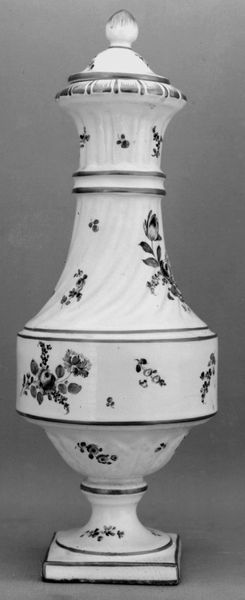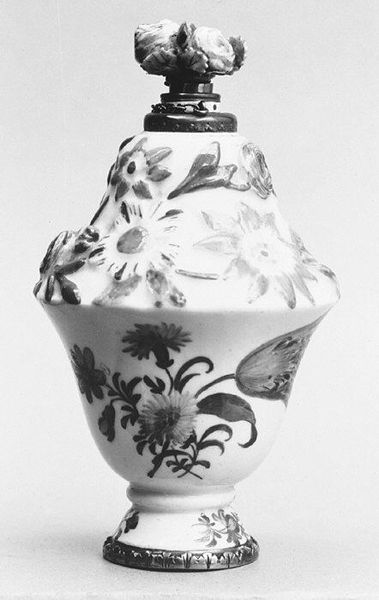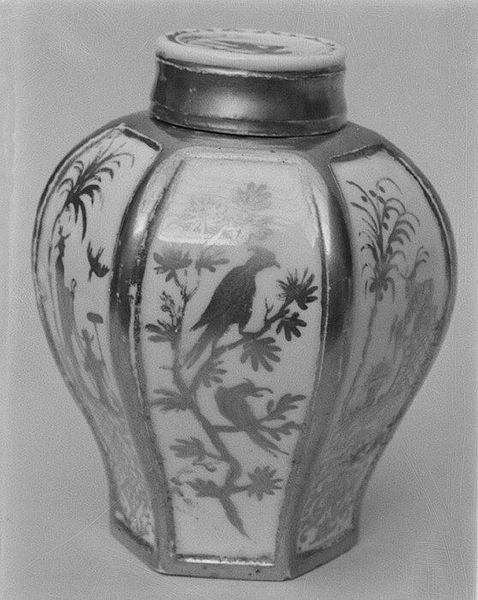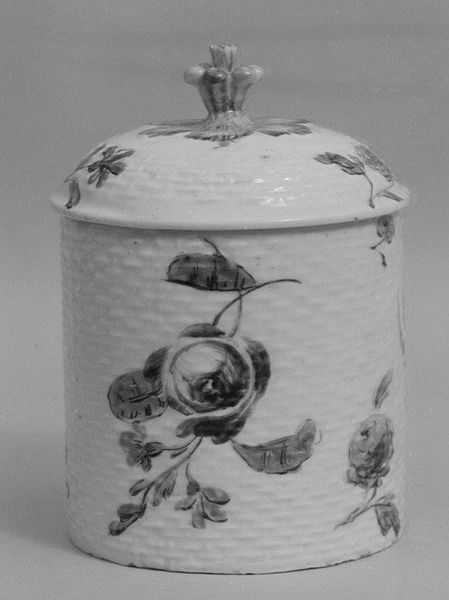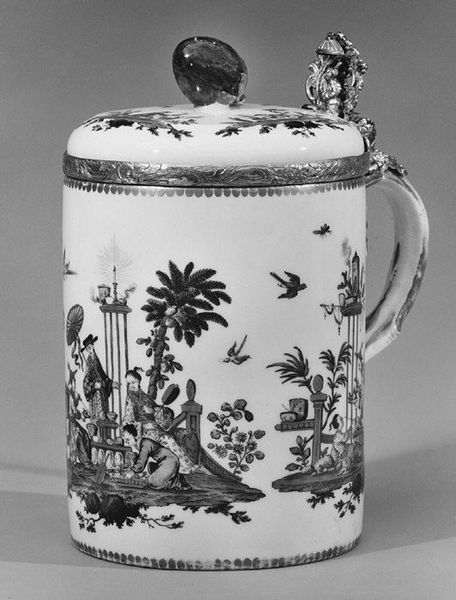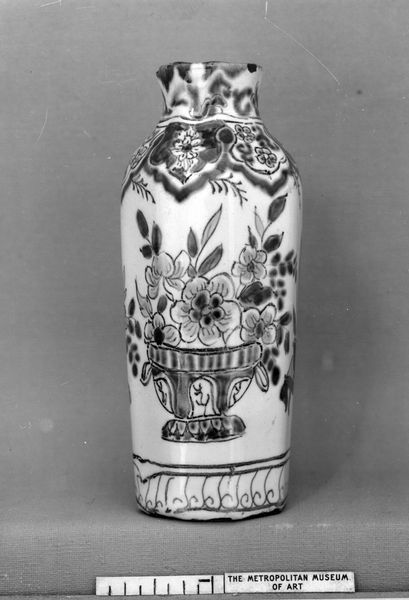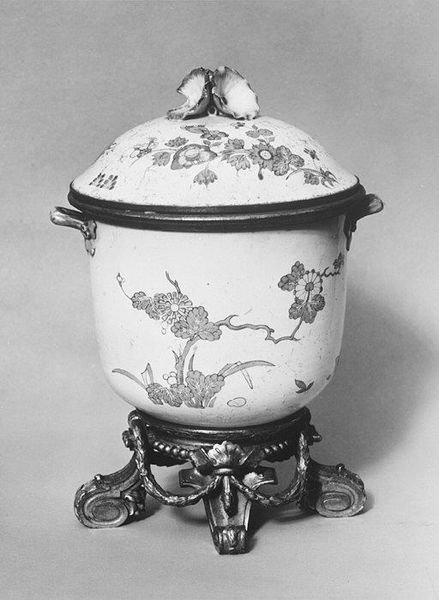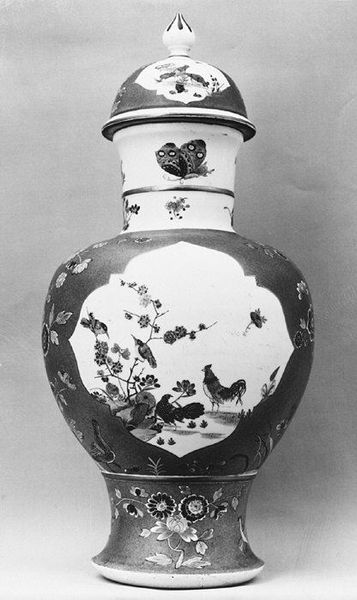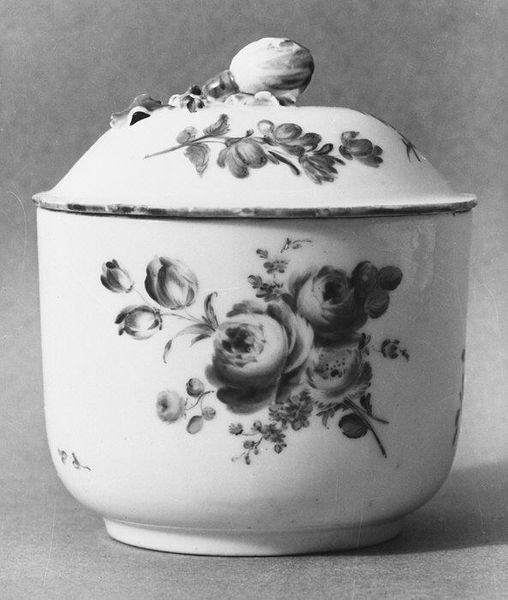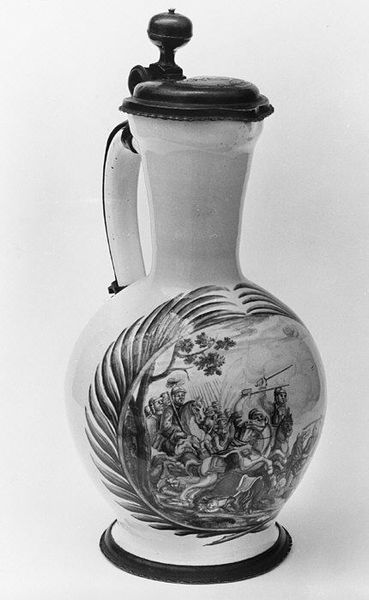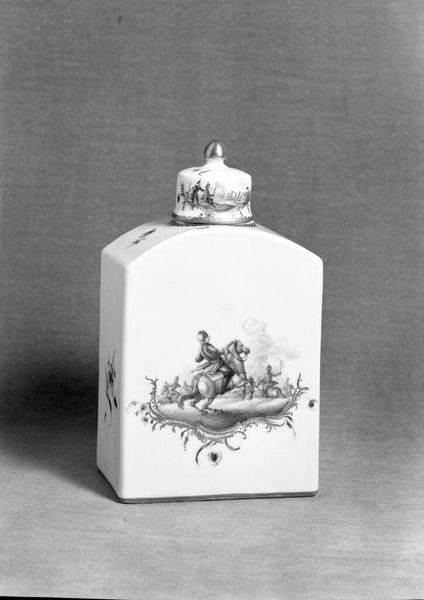
ceramic, porcelain, sculpture
#
decorative element
#
ceramic
#
bird
#
flower
#
porcelain
#
sculpture
#
decorative-art
#
rococo
Dimensions: Height: 4 5/8 in. (11.7 cm)
Copyright: Public Domain
Editor: So, this is a porcelain tea caddy, dating from around 1755 to 1770, created by the Fürstenberg Porcelain Manufactory. It’s currently held at the Met. What strikes me is how delicate and ornate it is. What can you tell me about this piece? Curator: This caddy embodies the Rococo aesthetic, but let's dig deeper than just 'decorative art'. Consider tea's place in the 18th century: an imported luxury heavily intertwined with colonial exploitation and the British Empire's trade routes. These objects become silent witnesses to the violent histories of trade. The birds and flowers, what could they be referencing? Editor: I hadn't thought about that. Maybe the flowers represent exotic locations? Curator: Precisely. And birds? Often symbols of freedom and beauty, perhaps also reflecting the commodification of the natural world inherent in colonialism. The porcelain itself, a sought-after material, further reinforces the object's connection to wealth and global exchange, often violently enforced. It represents social stratification and power. Editor: So the caddy, beyond its aesthetic appeal, really embodies a whole complex network of trade and exploitation. It's quite a loaded object. Curator: Exactly! It challenges us to acknowledge the less visible, often uncomfortable narratives embedded within even the most seemingly harmless works of art. How do you think contemplating these objects can encourage difficult conversations? Editor: Understanding that even beautiful objects like this one can carry difficult histories is something that I hadn't previously considered, but that adds layers of meaning that would otherwise be invisible. Curator: That’s what makes engaging with art so compelling. Every object can reveal untold stories about power, privilege, and our shared past. Editor: Absolutely! It makes you rethink what art objects meant then and what they can mean today.
Comments
No comments
Be the first to comment and join the conversation on the ultimate creative platform.

